News
The Canadian Jewish News has just published an article by Michael Fraiman looking at an often neglected story, but one that’s been gaining more attention in recent years, the history and present of Jews in Slovenia.
While Ljubljana has a historic Jewish Quarter in the Old Town (as marked by Židovska ulica (Jewish Street) and Židovska steza (Jewish Path)) – and the site of the Jewish Cultural Centre – it hasn’t has a large Jewish community for many years. Indeed, Jews were officially banned from the city in 1515, a restriction that stayed in place until 1867, with lingering anti-Semitism deterring new arrivals.
In the years before World War II there were thus less only around 1,500 people who self-identified as Jewish in the whole of Slovenia, and this community was then essentially destroyed with the murders that took place as part of the Holocaust.
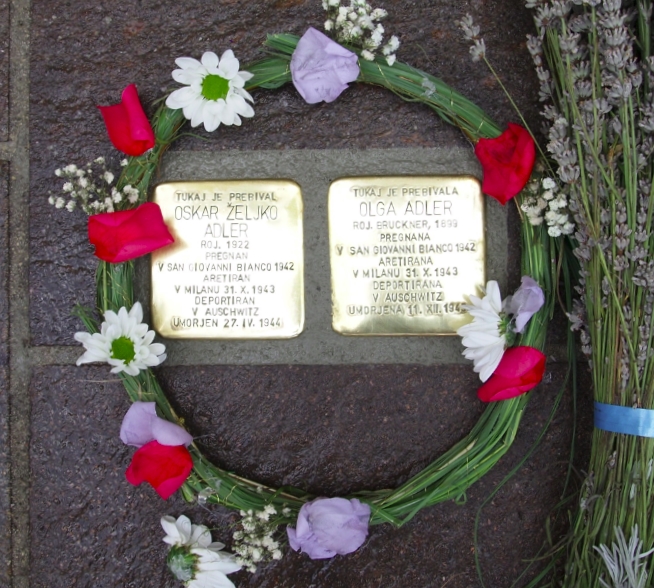
Two of the Stolpersteine. Photo: JL Flanner
It was only last year, 2018, that the Jewish community was symbolically welcomed back to Slovenia by President Borut Pahor as part of the events marking the laying of the first Stolerpsteine, a story you can read about here (along with a map of the stones’ locations). Two men who played key roles in that event were Robert Waltl and Rabbi Ariel Haddad, who are the subjects of The Canadian Jewish News story.
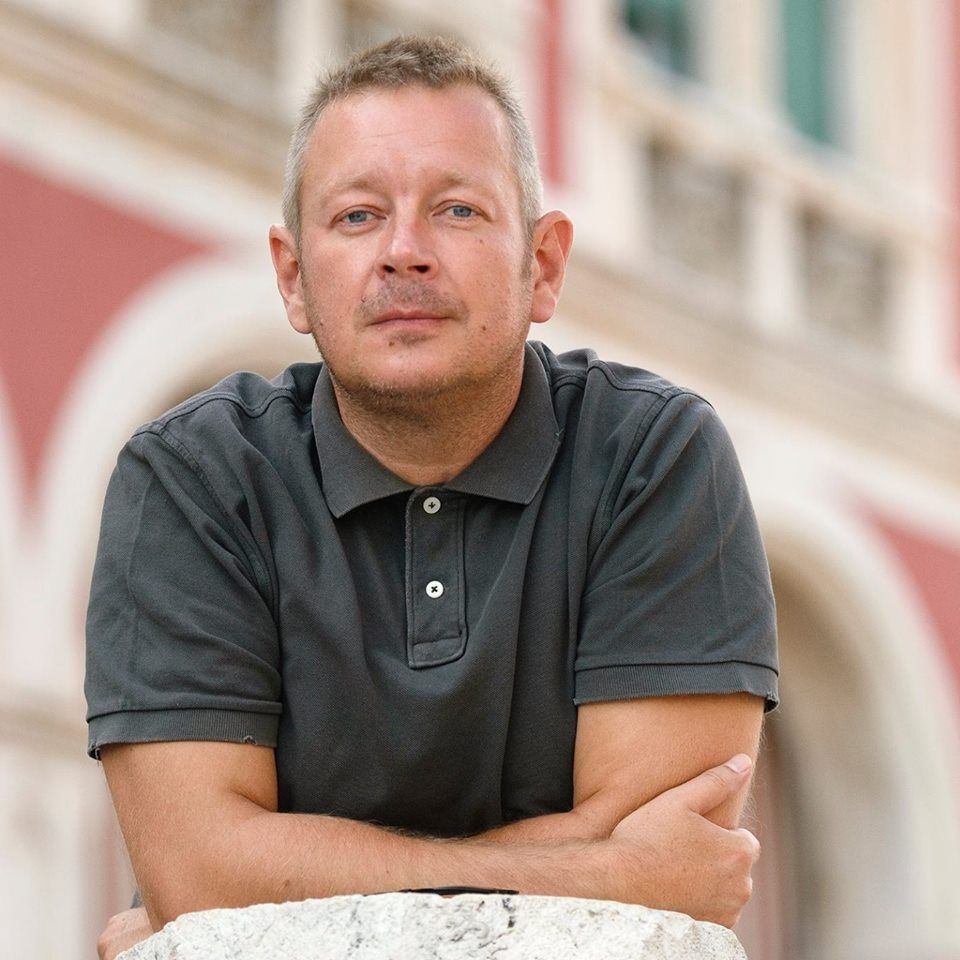
Robert Waltl. Photo: Mr Waltl's Facebook page
Mr Waltl is a familiar face to many, being a performer and theatre director, active in the cultural life of the city in the context of his Mini teater (sic), as well as putting in appearances as Dedek Mraz (Grandpa Frost) around the end of the year. But Waltl is also the man who runs the Jewish Cultural Centre (at Križevniška 3 SI-1000 Ljubljana – see the map at the end of this story). It’s here that you’ll find artworks and exhibits related to Jewish history in the country, including ones that mark the 587 Slovene Jews who died in the Holocaust.
Rabbi Ariel Haddad at the laying of the first Stolpersteine in Ljubljana. Photo: JL Flanner
The same building also houses the only working synagogue in Slovenia, and it’s here that Rabbi Ariel Haddad enters the picture. The Rome-born Rabbi lives in Trieste, about an hour from Ljubljana, but often visits the city in his capacity as Chief Rabbi of Slovenia. Rabbi Haddad’s connection with the Slovene capital started in 2000. He visited the city ahead of Passover and, since the local community lacked a Rabbi, he was invited to hold what was perhaps first seder of Pesach in Slovenia since the war.
A visit to the Jewish Cultural Centre
It’s an interesting story of a community returning to life after unimaginable pressures and suffering, and now slowly reclaiming its place at the heart of a city that has hopefully left behind the horrors of anti-Semitism, and is blossoming into a more tolerant and open society, and you can read more of it at The Canadian Jewish News.
You can learn more about the Jewish Cultural Centre and synagogue, in English, here, visit it at the location shown below, or follow its work on Facebook. The schedule for the nearby Mini Teater, with performances in all genres and for all ages, can be found here.
STA, 3 January 2019 - Two police officers and a trainee from Kranj who had invited a teen friend to come along in their van while on night patrol last July have been dismissed in a final decision confirmed by a government commission, the newspaper Dnevnik reported on Thursday.
The case made headlines after the girl posted on Instagram recordings of her behind the wheel of a police van carrying smoking and boozing officers after a night shift on 11 July.
The video incriminated a 28-year-old head of the patrol and a 33-year-old police officer, as well as a 20-year-old trainee, who was allegedly the initiator of the idea.
The video shows that the girl was allowed to drive the van even though she did not have a driver's licence.
Earlier: Kranj Police in Trouble After Smoking, Drinking and Letting Teen Drive
What is more, the recordings show that the police officers were drinking spirits and smoking.
"Everyone on the job is a bit drunk, but I'm being a good girl," was the comment she posted on her profile.
Further inquiries also showed that the patrol misreported on their duties that night, including making up a false story about breathalysing a driver.
The three saw their employment contracts with the police terminated in August and they were banned from performing police tasks, but the procedure was not yet final due to the possibility of appeal.
According to Dnevnik, the dismissals are now final as they have been confirmed by the government commission for appeals related to labour relations.
STA, 3 January 2019 - The construction sector in Slovenia expanded for the second year in succession in 2018 and the Chamber of Commerce and Industry (GZS) expects the growth to continue in 2019 although at a slightly slower pace.
Construction up by fifth in 2018
The value of construction work rose by 18% year-on-year in 2017, while it grew by 21.5% in the first ten months of 2018, data from the Statistics Office show.
"The growth was expected because the scope of construction at the end of 2017 was low despite the high growth of the sector," the head of the Chamber of Construction and Construction Material Industries at the GZS, Jože Renar, told the STA.
The value of work on civil engineering in the first ten months of 2018 rose by 21.7% from the same period a year ago. Work is under way both on road and railway infrastructure.
"Intensive road maintenance work is under way to make up for the backlog of recent years when the state reduced road maintenance to far below minimum ... Extensive renovation work is also under way on railways," Renar said.
The construction company Pomgrad, which built the Magna Steyr paint shop near Maribor and is currently working on three major infrastructural projects with partners, recorded good results in 2018. Its consolidated revenue for the year is expected to reach some EUR 160m.
The company is focussing on exports, having built a hotel in the Plitvice Lakes National Park in Croatia and a housing complex in Sweden in the past year.
"We made a big step primarily in internationalisation and have several important deals under way abroad. We also finished several major construction projects in the domestic market, among them the new Magna factory in Hoče, which we successfully built in an extremely short period of time," CEO Iztok Polanič told the STA.
Construction of buildings expanded by 20.8% in the first ten months of 2018. "Construction of buildings is on the rise, both for private and business buildings, where unlike in the civil engineering projects private investors prevail," Renar said.
GZS expects single digit growth in 2019; staff shortage among biggest challenges
The GZS expects growth to continue in 2019 but it is not expected to be double digit as in the last couple of years. "We're counting on growth in civil engineering section and in buildings to be comparable," said Renar.
Although Slovenia's economy has been expanding rapidly and all construction companies in the country are very busy, the construction sector faces many challenges and problems, Polanič said.
"A key challenge is definitely the lack of engineering staff, a problem virtually all construction companies in Slovenia are struggling with.
"Another challenge is the unpredictability of projects and investments, which makes long-term planning in construction extremely difficult," the Pomgrad CEO said.
According to Polanič, the company will this year focus on infrastructural and industrial projects, it also counts on several new calls for applications in roads and railway infrastructure.
"We are starting the new year quite busy and will start working on a few new projects ... It's important for our company to win projects that occupy the entire Pomgrad system," he said.
According to Renar, the GZS expects the state to adhere to the international rules on tenders in the future and avoid "risky non-transparent contracts."
The state should prevent unfair competition by companies that are not bound to respect the collective bargaining agreement of the constructions sector, he said.
Related: All our stories tagged "property" can be found here
STA, 3 January 2019 - The Financial Administration (FURS) launched on Thursday a mobile app giving individuals access to all the services provided by the online system eTaxes.
Apart from providing access to all relevant forms, the app will also provide personalised functionalities such as a calendar and an alert system informing workers if their social contributions had not been paid.
The main objective of the app is to make it easier for individuals to cooperate with the tax authorities. The app will inform users when it is time to file certain forms or pay a certain tax.
Android users can download the app from Google Play and iOS users can get it in the App Store.
The Android app can be found here, while the Apple app is here
Until today, taxpayers could log on to eTaxes with their personal computers using a digital certificate. Existing users will now be able to access eTaxes through the app with their existing accounts.
Electronic tax filing has been available since 2003 and is currently used by 50,000 individuals as well as all companies in the country, as they are obligated by law to have an eTax account.
Below is a review of today’s news in Slovenia, summarised by the headlines in the daily newspapers for Thursday, January 3, 2019, as prepared by the STA:
DELO
Economy in the New Year
"How will we live this year?": Although some analysts predict an upcoming crisis and indicators suggest the economy will cool down, projections show that 2019 will be a favourable year for Slovenians on average. (front page, 3)
Coalition
"Toughest decision yet to be made": In its first few months, the government of Marjan Šarec was mostly giving money around, but now it is time to make true and tough decisions, including on how to supplement the 2019 budget, the decision on which the existence of the five-member coalition hinges. (front page, 2)
Ski jumping
"Timi Zajc: Four Hills Tournament unravelling excellently": The 18-year-old Timi Zajc has been the best Slovenian ski jumper in the Four Hills Tournament after two out of four events, currently sitting in the seventh place. (front page)
DNEVNIK
Work after retirement
"Retired people will finally be able to work": The Ministry of Labour will finally enable retired people this year to have a double status, with other ministries also preparing solutions to increase the employment rate among older people. (front page, 4)
Political challenges in 2019
"Year of European elections, taxes and congresses": The European elections, impeachment of the prime minister, drawing up of the first budget of the minority government, parliamentary inquiries, selection of a constitutional justice and congresses of political parties will be the main political events this year. (front page, 2)
New Year's eve in Ljubljana
"Tens of thousands welcome the New Year in the open": Numerous residents of Ljubljana, tourists and visitors welcomed 2019 in four squares in the capital in the open, watching fireworks. It was also festive in other major Slovenian cities. (front page, 8)
FINANCE
Investments in 2019
"What to do with money?": The paper offers advice to both conservative and ambitious investors about where to invest this year. (front page, 2-4)
Auctions
"Apartments, houses and land on sale": January will be eventful when it comes to auctions of property, including in Ljubljana, on the coast and in the lakeside resort of Bled, in Croatia's Umag and even in Greece. (front page, 6-7)
Mobile applications
"eDavki also on mobile devices as of New Year": The eDavki application for online payment of taxes is available on mobile devices as of 1 January. One of the features is the Tax Administration warning you about when you have to pay your taxes. (front page, 11)
Richest Slovenians
"Who is coming among the richest Slovenians": The paper presents nine new candidates who are approaching the threshold of the 100 richest Slovenians. (front page, 8-9)
VEČER
Maribor airport expansion
"More than 60 remarks": Individuals, NGOs and local communities have submitted numerous remarks on the zoning rules envisaging expansion of Maribor Edvard Rusjan Airport, which serves Slovenia's second largest city. (front page, 2-3)
Maribor
"Sellers are degrading him": Numerous public works in Maribor by Janez Vidic, who is also the author of the coat of arms of Maribor, are exposed to oblivion and even vandalism. (front page, 2-3)
New Year' eve
"Happiness, health and peace": Around 14,000 people welcomed the New Year in Leon Štukelj Square in Maribor. There were even more people in Ljubljana (50,000) and it was also festive in Koper, where just like in Maribor, there was no fireworks this time. (front page, 4)
Housing market
"Apartments selling like hot cakes": Demand for apartments in northern Slovenia is higher than supply, with smaller apartments on lower floors being in the highest demand. Prices in Slovenj Gradec are comparable to those in Maribor and Velenje. (front page, 13)
STA, 2 January 2019 - The Slovenian National Theatre (SNG) Maribor (Slovensko narodno gledališče Maribor) will mark its centenary in 2019, with celebrations culminating on 27 September, exactly 100 years after its founder Hinko Nučič staged the first play there.
Maribor had a vibrant cultural scene even before the professional theatre was formally established in what is now Slovenia's second largest city.
But the new theatre enhanced Slovenian national identity and positioned Slovenian as the national and official language.
The building housing SNG Maribor was built in 1852, and since then Maribor has had a professional theatre, but at the time it was fully German.
"Slovenian actors were not allowed to perform there," director and author Vili Ravnjak, who has worked for SNG Maribor for many years, has told the STA.
While first productions in Slovenian were staged as early as the middle of the 19th century, they were performed at a different location.
"It was only when Maribor became a politically and culturally Slovenian city that acting naturally moved to the former German theatre", which closed shop after WWI in early 1919.
In 1941, when Slovenian lands were occupied by the Nazis, German theatre was reintroduced, while Slovenian professional theatre was revived after WWII in 1945.
Although it is hard to say when SNG Maribor had its heyday, Ravnjak highlighted the 1930s and 1990s for drama and the last decade for opera and ballet.
Plays at SNG Maribor attracted the most media attention when director Tomaž Pandur (1963-2016) put on stage his controversial extravaganzas in the 1980s and 1990s.
Ballet and opera ensembles have meanwhile made a name for themselves under artistic directors Edward Clug, a choreographer of world renown, and conductor Simon Krečič.
SNG Maribor is the largest public cultural organisation in Slovenia and the only one bringing under one roof drama, opera and ballet.
It formally consists of Drama, Opera, Ballet and the Symphony Orchestra, while also housing the Maribor Theatre Festival as a separate unit.
In 2003, it was granted the highest status - that of national theatre, which means it is fully funded by the state or the Culture Ministry as its founder.
Danilo Rošker, SNG Maribor's director for the past 15 years, believes that ever since its beginnings, the theatre has enriched the cultural scene and extended the boundaries of what is possible.
The celebrations will be launched in January when SNG Maribor's production is presented at Ljubljana's Cankarjev Dom, accompanied by talks with acclaimed artists.
But it will be particularly festive in September: an exhibition tracing the theatre's history will be put up in the streets of Maribor, a monograph and a special postal stamp will be published and a special ceremony staged.
September 27 will see the premiere of Grmače, a play by acclaimed Slovenian author Dane Zajc (1929-2005) staged by Nina Rajić Kranjac, a rising star on the Slovenian theatre scene.
The celebrations will end with an opera premiere in May 2020 to remember 1 May 1920, when SNG Maribor's predecessor staged the first opera, Hervé's Mam'zelle Nitouche.
The theatre’s English website can be found here
Drago Tršar (b. 1927) was the subject of two major exhibitions in 2018. One focused on his monuments, and was put on in the Modern Gallery’s (Moderna galerija) main branch, by the National Gallery. That one ended in September, although you can still see certain works around town, as you’ll recognise in this story.
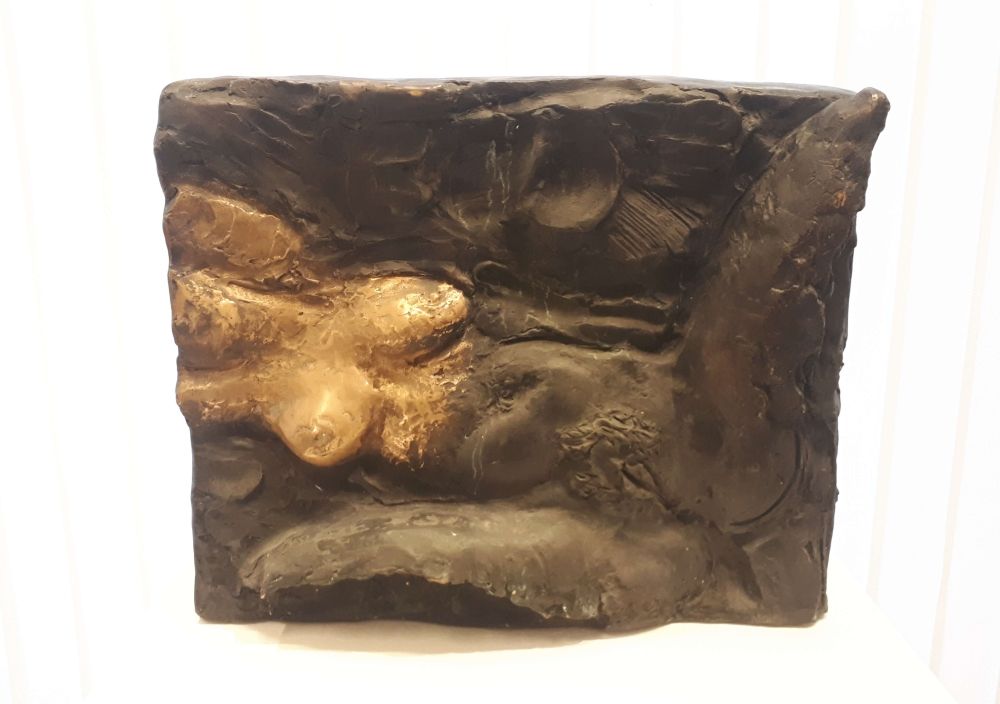
Photo: JL Flanner

Photo: JL Flanner
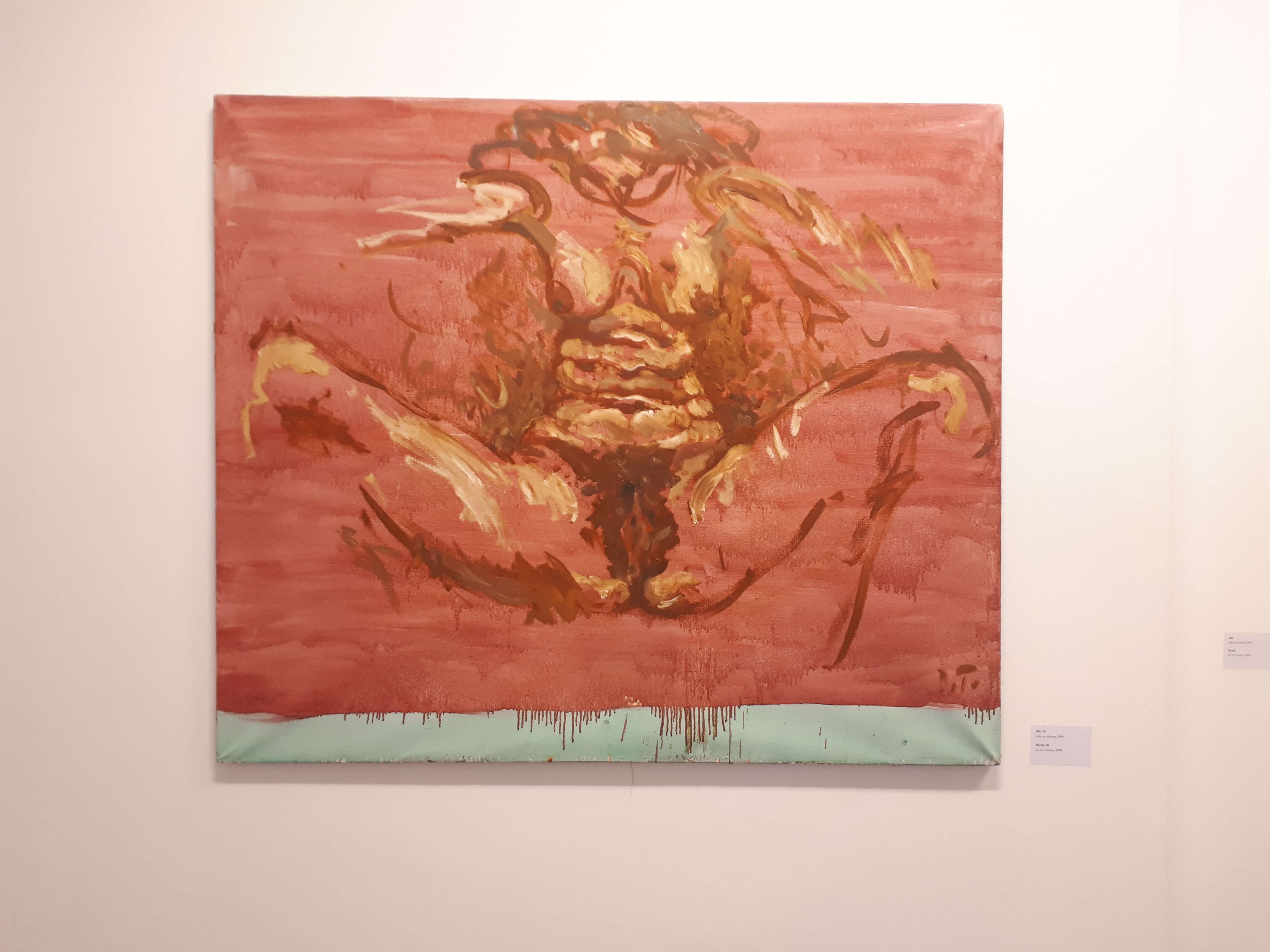
Photo: JL Flanner
The second exhibition opened in late November and continues until January 20, 2019. This was curated by Sarival Sosič, PhD, and is on at the City Gallery (Mestna galerija), just a few doors down from City Hall, and shows a very different side to the man, being two floors of erotic sculptures and paintings rather than heroes of the post-war Yugoslav state.
Related: Republic Square – Ljubljana’s own concrete utopia
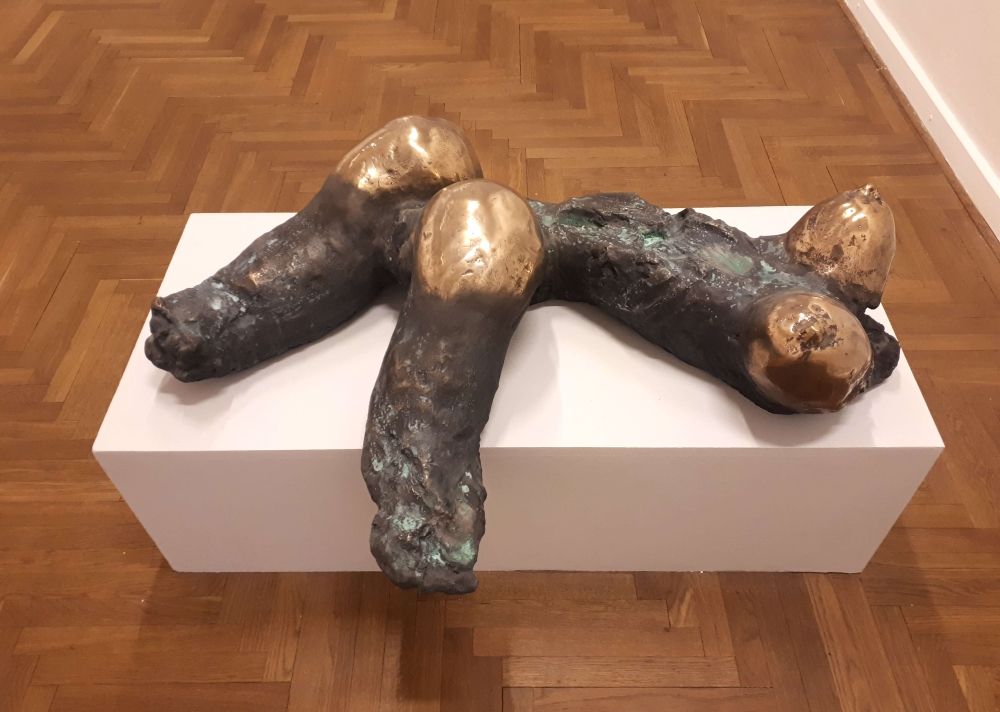
Photo: JL Flanner
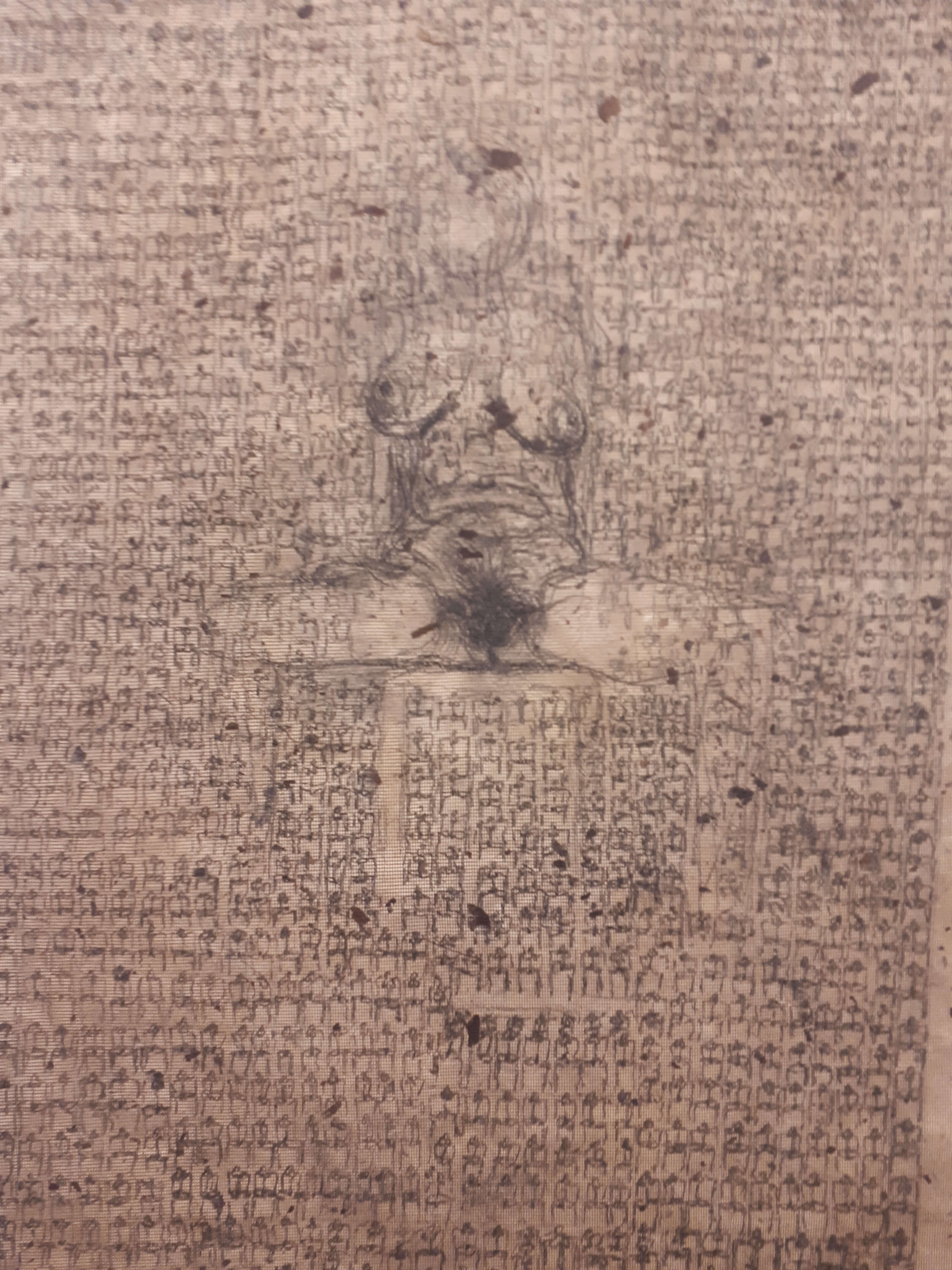
Photo: JL Flanner
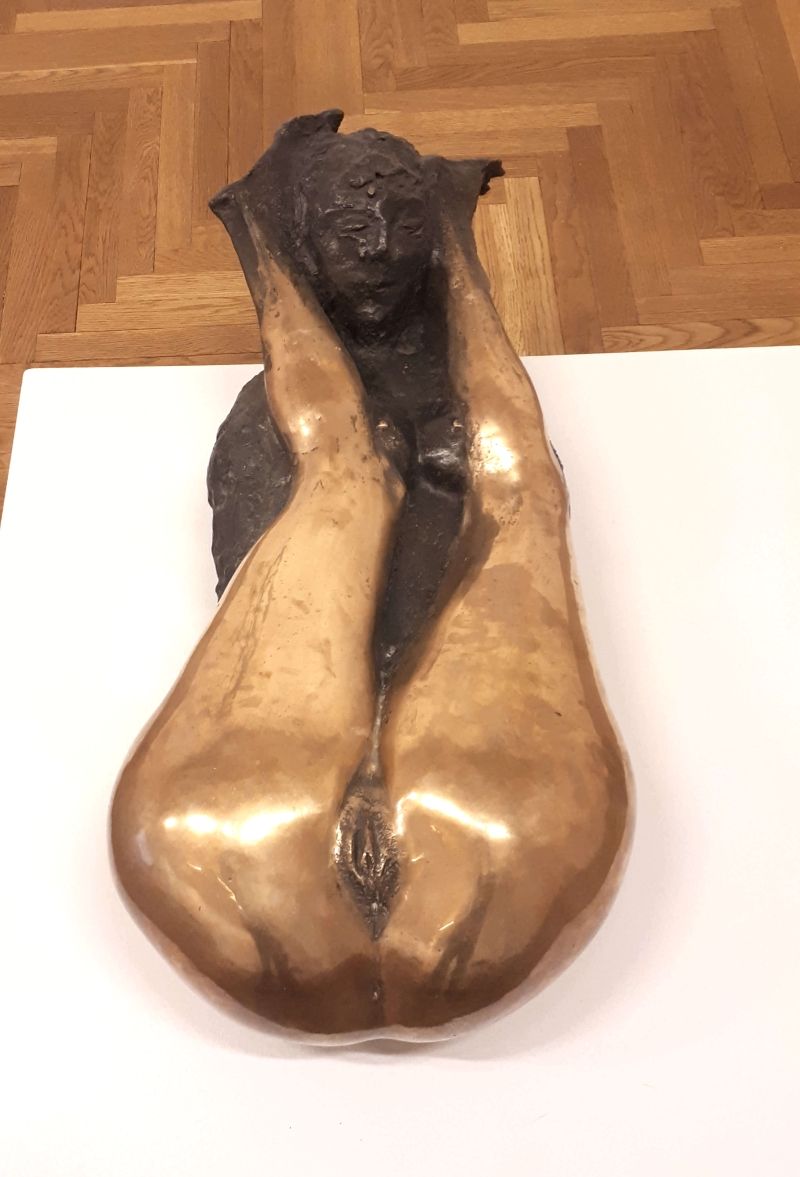
Photo: JL Flanner
As should be clear in the images accompanying this text, these are erotic works in bronze and ceramic, as well as a few paintings, large and small, and not studies of the naked form at modest rest. There’s no is she or isn’t she – as with Bernini's The Ecstasy of St Theresa – but instead many of the subjects are clearly lost in orgasm, so bear this in mind if in town with the neighbour’s kids or the Pope.
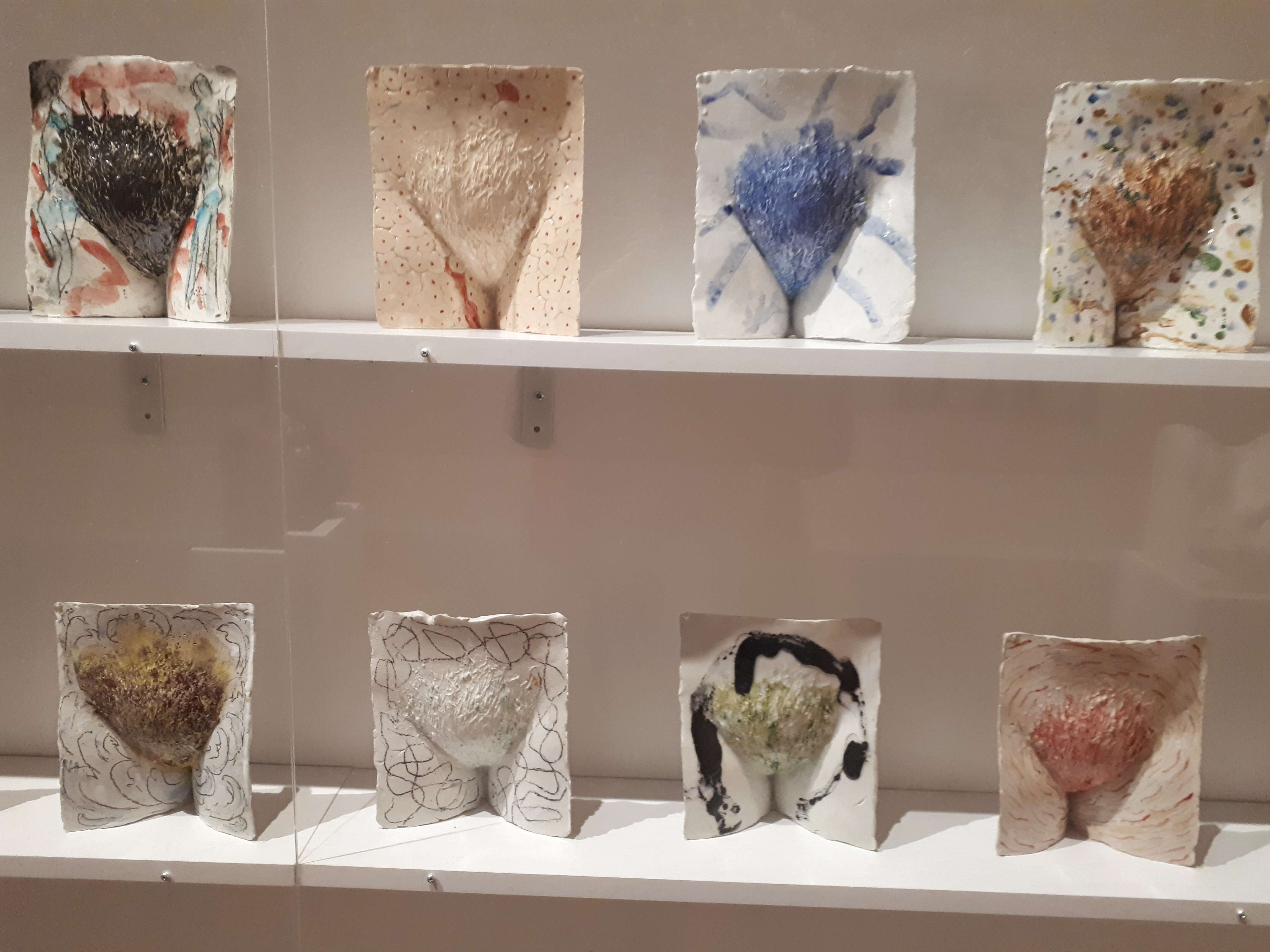
Photo: JL Flanner
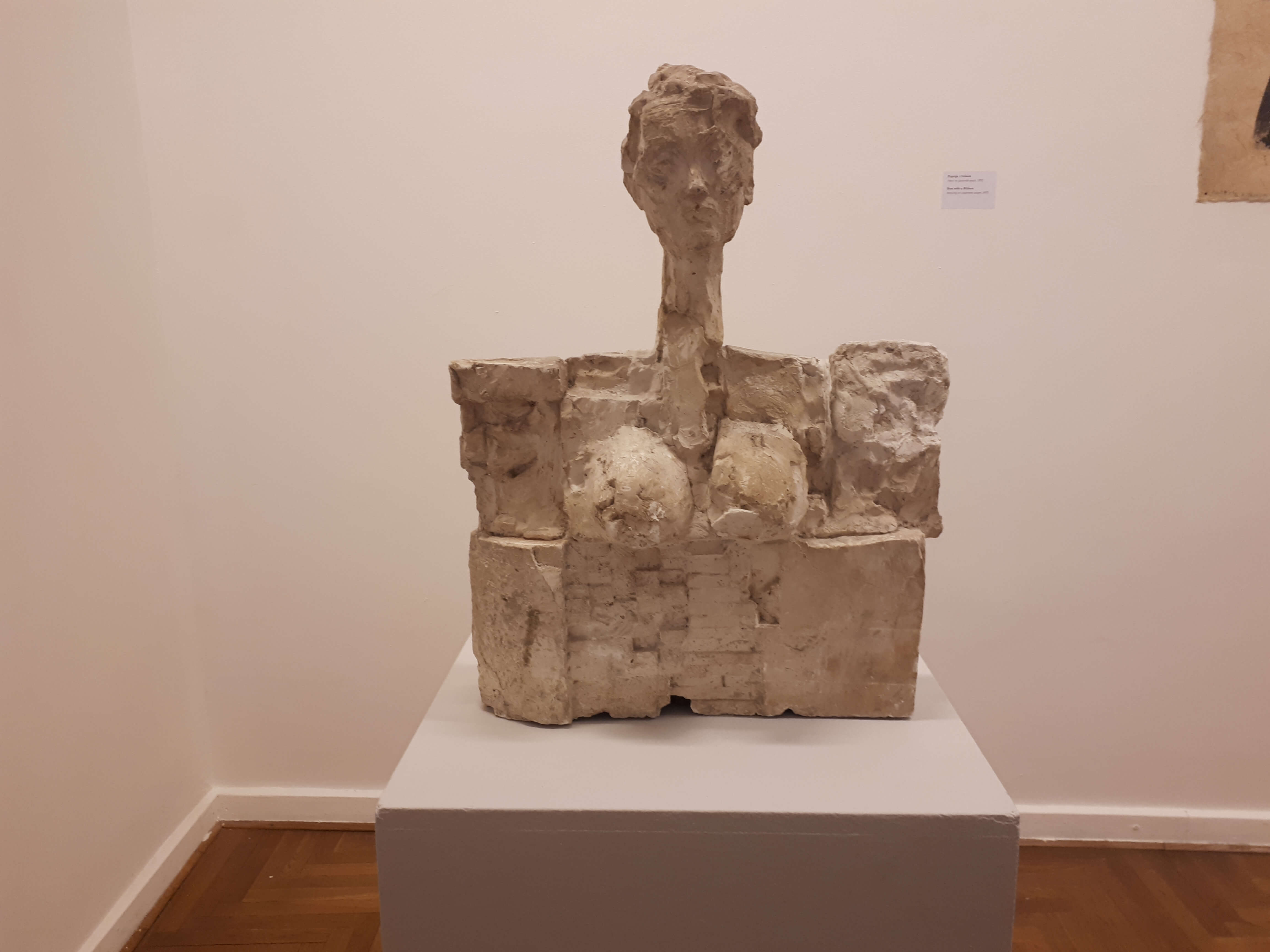
Photo: JL Flanner
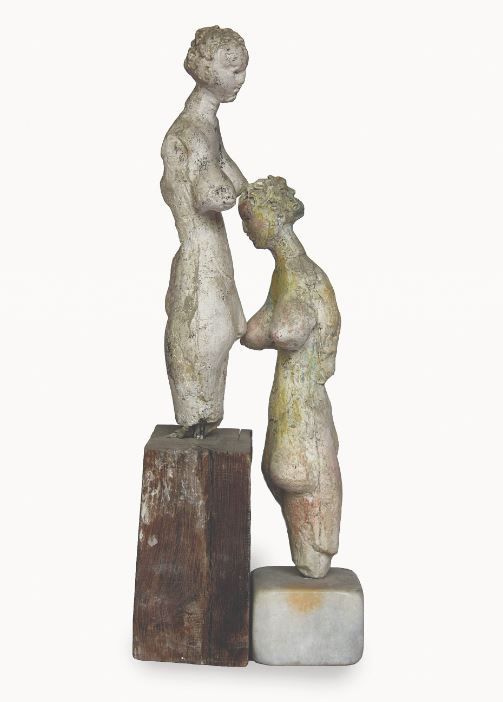
Drago Tršar, Tolažba, Photo: Dejan Habicht / Moderna galerija, Ljubljana
On at the free to visit City Gallery (Mestna galerija), and thus always worth your time, this show is recommended to anyone who’s curious about what they’re seeing and reading in this story, showing a good range of well executed works in different styles and media, albeit with a relentless focus on the breasts, bottoms and vaginas of relatively young women, with barely any male forms to be found.
Mestna galerija Ljubljana, Mestni trg 5, 1000 Ljubljana. The place is closed on Mondays, while on other days it’s open 11:00–19:00. The related website is here
STA, 31 December 2019 - Atletico Madrid goalkeeper Jan Oblak has confirmed for the STA he is returning to the national team after an absence of more than a year.
Oblak had not played for the national team under previous managers, Tomaž Kavčič and Igor Benedejčič, but it was expected he would return now that Matjaž Kek has taken over.
He says he will now be available for the qualifying for the Euro 2020. "My future in the national team was never questionable and my decision was not adopted based on the appointment of the new manager," he said.
Many football experts see Oblak's return as crucial if the team is to put behind a long dry spell, though some have also raised questions about how it will affect the team given that he stayed away during the painful downward spiral.
"I have a very positive outlook on that. I believe that I can give the team a lot and help it achieve the goals that we have set for the next qualifying.
"As far as the fans are concerned, I think it is everyone's wish that the results the team has been achieving lately change... I have been in touch with some of the players but there has never been any talk about hard feelings or any problems," he said.
Oblak, one of the world's best goal keepers who has also been nominated twice for the Ballon d'Or, last played for the national team in October 2017.
STA, 29 December 2019 - Art lovers will be in for an interesting year as Moderna Galerija, the national museum of modern art, brings some peculiar exhibitions in 2019, including one on visual art in the Kingdom of Yugoslavia and another on the Non-Aligned Movement.
The first exhibition will open on 31 January, featuring a review of Slovenian painters born in the 1970s and 1980s.
It will try to give an insight into what painting as a classic medium means today after it underwent some radical revaluation in the 20th century.
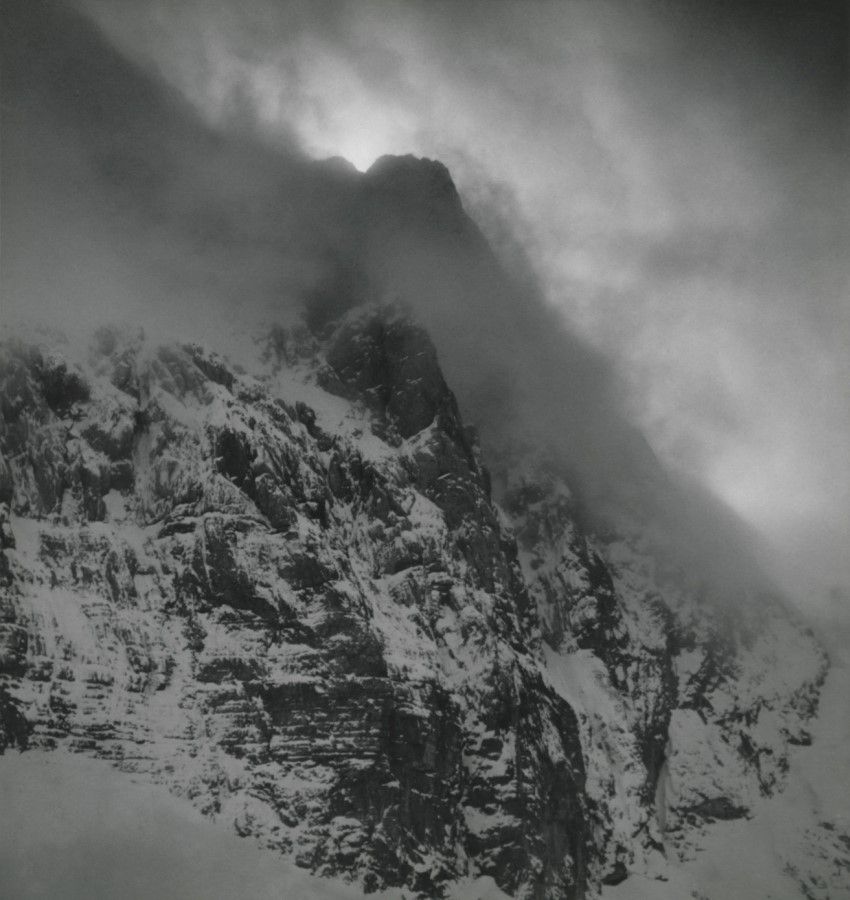
Slavko Smolej, The Triglav Northern Wall in the Mist, 1935, Moderna galerija
Visual art in the Kingdom of Yugoslavia (1929-1941) will open at the end of April, bringing works by leading artists from the region from the 1930s.
Paintings, statues, prints, drawings, photos and films for the exhibition will be contributed by more than 30 institutions from the region.
The recurring theme will be Yugoslavia as seen by Slovenian-US writer Louis Adamič in the travelogue from 1934 he wrote after visiting his homeland.
Related: Check out out weekly guides to what's on in Ljubljana here
For Adamič (1898-1951), the Yugoslavia of the 1930s was a marginal country of stark contrasts torn between pre-modern customs and capitalism which is nearing an end.
He also depicts it through his meetings with artists and writers such as sculptor Ivan Meštrović or writer Miroslav Krleža, and even King Aleksandar. (More details can be found here.)
The museum will also host the 9th Triennial of Contemporary Art - U3, which will run from 10 October to 2 February 2020.
It will be curated by Prague-based Vit Havranek, who has been project leader of the Tranzit initiative for contemporary art since 2002 and teaches at the Academy of Applied Arts in Prague.
A work by Zoran Mušič. Photo: JL Flanner
To mark the 80th anniversary of the outbreak of WWII, the museum will pay tribute to Slovenian painter Zoran Mušič (1909-2005) in September.
His works from the series We Are Not the Last from the 1970s will be put on show together with the drawings he made in the Dachau concentration camp which were discovered in Italy in 2016.
Meanwhile, the Metelkova Museum of Contemporary Art, Moderna Galerija's contemporary art arm, will launch the show Southern Constellations: The Poetics of the Non-Aligned in March.
Curated by Bojana Piškur, the exhibition will highlight the ideas, ideals and principles of the movement, particularly in close connection with its cultural policies.
The museum says the exhibition should not be considered a kind of exoticism or nostalgia for the movement.
Instead, it will try to place these policies in a contemporary context of the global economic, political and cultural system. More details on this show can can be found here, while the gallery's two locations are shown below.
STA, 1 January 2019 - Buyers in stores across Slovenia will no longer be able to get plastic bags free of charge as of today. However, free lightweight plastic bags will still be allowed at the fresh produce isle. The measure is a part of EU-wide efforts to halve the use of lightweight plastic bags to 90 per person annually by the end of 2019.
Buyers will still be able to buy plastic bags at the register, however the retailers are not allowed to set the price lower than wholesale.
The measure aims to reduce the use of lightweight plastic bags per person from 200 a year to 90 by the end of this year and to 40 by the end of 2025.
Many Slovenian retailers no longer supply plastic bags free of charge. However, buyers may still get a lightweight plastic bag from the cashier, without having to ask, when buying frozen stuffs or cleaning supplies.
However, new Environment Minister Jure Leben announced after being appointed in September that Slovenia would soon impose a general plastic bag ban.
He has recently sent out invitations to retail chains for a meeting to discuss his plan under which plastic bags would not be available at the cash registers at all.
Related: Meet the People - Neja Maruša Medved, Vegan and Zero Waste Blogger
Warren Buffet, the famed investor, sometime richest person in the world and owner / fan of Dairy Queen, often notes that "only when the tide goes out do you discover who's been swimming naked”, and the same idea can be applied to ice cream in Ljubljana.
The frozen treat is easy to sell in summer, and many places do, but it’s only in winter you find out who are the devotees and who the dilettantes. What thus follows is an inexhaustive list of six ice cream stores in Ljubljana's pedestrianised area that do something to stand out from the competition, and are worth consideration when deciding how to allocate your dessert calories of the day.
One thing to note, especially if you’re a little overwhelmed by the choice, is that most places offer half-half options, so you can get “1 scoop” and still get chocolate and vanilla, or whatever more baroque combination takes your fancy – just let the server know what you want.

Zvezda. Photo: JL Flanner
Zvezda is best known as a fancy café with great cakes and a good view of Zvezda Park (with zvezda meaning “star”, and the park so named due to the star-shaped arrangement of the paths). In the summer there’s a very extensive range on offer, with two freezers full inside and another one (perhaps two) in the street. While the high season brings all the standard and fancy flavours, in the winter there’s an obviously reduced offering, but still enough to satisfy both the unadventurous and wild hedonist. As noted above, the place is a café and cakeshop, with the latter found both in the “ice cream” part of the store – along with macaroons, chocolates and sandwiches – as well as inside. All year there are inside and outside seats, and the menu includes plenty of snacks and hot and cold drinks, as well as alcohol. There are also bathrooms.
Zvezda, Wolfova ulica 14, 1000 Ljubljana, www.zvezdaljubljana.si
Mateja, the owner and ice cream master at Romantika, talks about her work (with English subtitles)Not far away from Zvezda, just around the corner on the other side of the park – which in this area is known as Congress Square (Kongresni trg), there’s a small place with a different vibe. This is Gelateria Romantika, a small store with a fresh look and, more importantly for our purposes, freshly made gelato in a wide range of flavours, with some of the more interesting ones that you can find in town. Think gorgonzola or parmesan, or something a little milder, like vanilla and pumpkin oil – a Slovene classic – or even something you may have seen before, like chocolate or coffee, all made with the singular vision of the owner and certified ice cream master, Mateja, who also works in the store. A must-visit if you want to try something that you probably won’t see anywhere else on your trip.
Romantika, Dvorni trg 1, 1000 Ljubljana, www.gelateria-romantika.si
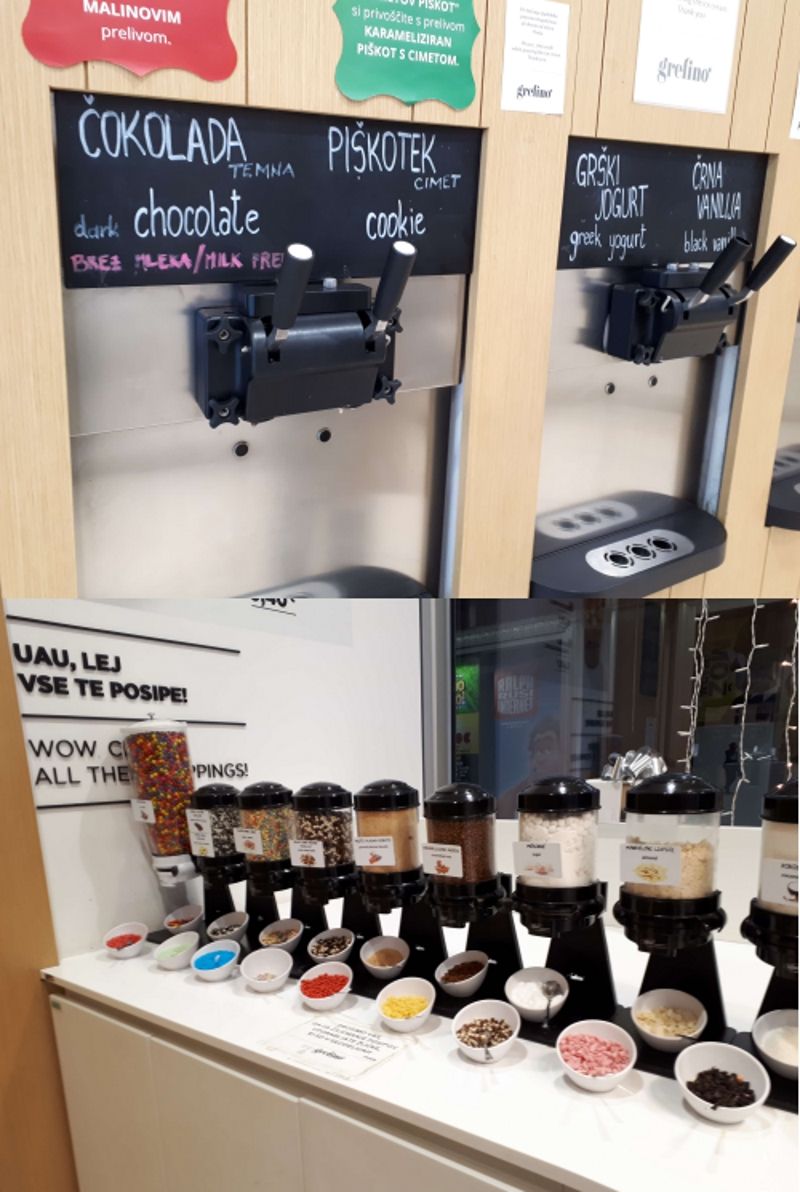
Grefino. Photo: JL Flanner
Perhaps the most appealing place for children is Grefino, although the more exited they are perhaps the more careful parents should be, depending on the dietary constraints that apply when in town. The set-up is simple: up to six different flavours of soft serve ice cream / gelato, often including vegan options, that you pull the pump on, thus deciding exactly how much you’ll get, with purchases paid for by weight. The real draw is the toppings that you can also add, which range from candy to cookies, sauces to syrups and so on. In addition to ice cream you can also get pancakes and waffles However, note that there are no bathrooms and no indoor seating (although a bathroom can be found in Nama, the department store next door).
Grefino, Cankarjeva cesta 1, 1000 Ljubljana, www.nama.si
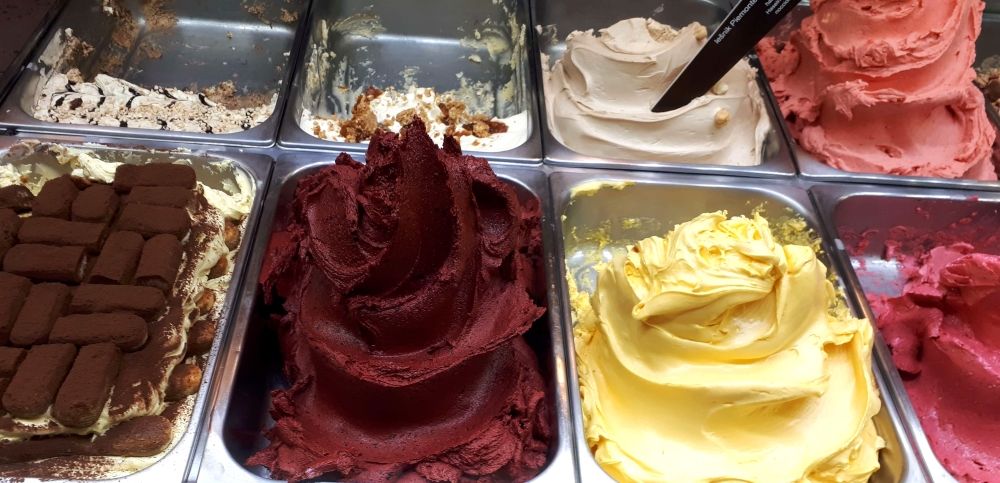
Cacao is another cake and ice cream place, and in the summer it has a long cabinet outside full of classics, standards and innovations, with another inside that offers a mostly different selection. In the winter the outside one disappears closed, but go inside and you’ll still find a good range on offer, along with cakes, coffees, and other drinks. There’s also two bathrooms down a few stairs. You can find Cacao a very short walk from one corner of Prešeren Square, the one with the statue.
Cacao, Petkovškovo nabrežje 3, 1000 Ljubljana, www.cacao.si
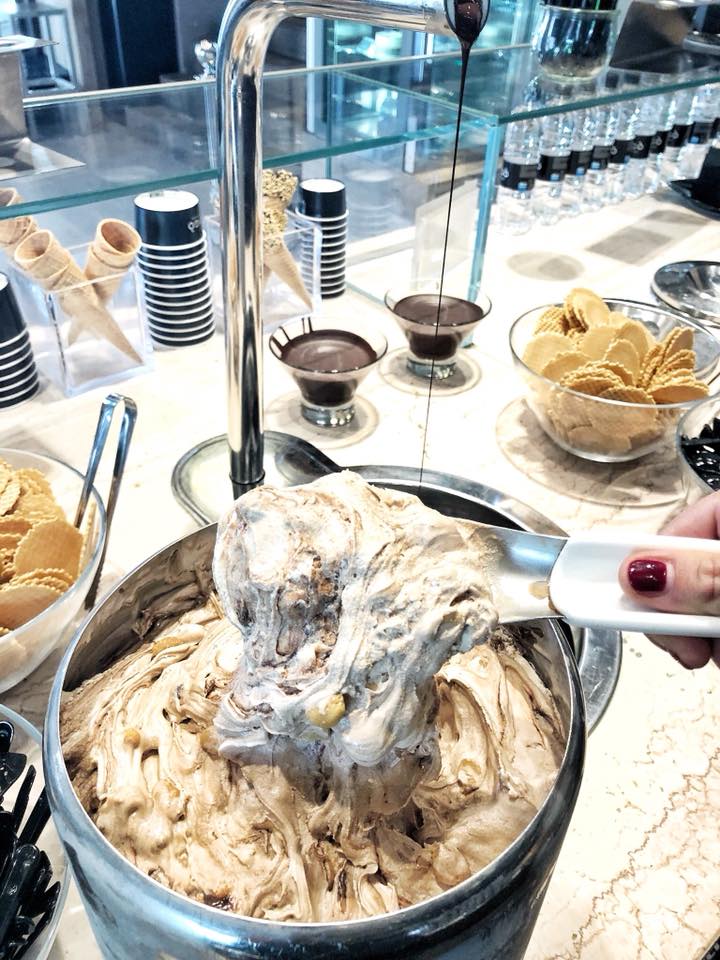
Vigo: Photo: Vigo
Vigo isn’t far away, just across the Triple Bride and into the Old Town, in clear view of Town Hall and the Robba Fountain (a genuine fake). Vigo is another cake and ice cream place, offering classics with a twist by the cone or cup. Something kids seem to love is the taps of dark and white chocolate that you can get as toppings. There are seats and bathrooms, and a full range of café drinks.
Vigo, Mačkova ulica 2, 1000 Ljubljana, www.vigo-icecream.com
How things work at Ice WaveWith Rustika now turned over to pizza by the slice, the only dedicated ice cream store on Trubarjeva cesta is Ice Wave, and it has a unique offer. The dessert made in front of you using an “frozen plate”, with chocolates and candies chopped up and mixed in to order, then delivered in the form of “ice cream rolls”, as shown in the video. It’s not a traditional ice cream, but if you want to try something new in terms of texture and presentation then this is the place to come.
Ice Wave, Trubarjeva cesta 7, 1000 Ljubljana, www.icewaveshow.com
If you know of an interesting store selling ice cream in Ljubljana over the winter that I should have included on the list, then please put the details in the comments and I'll check it out when I can.






